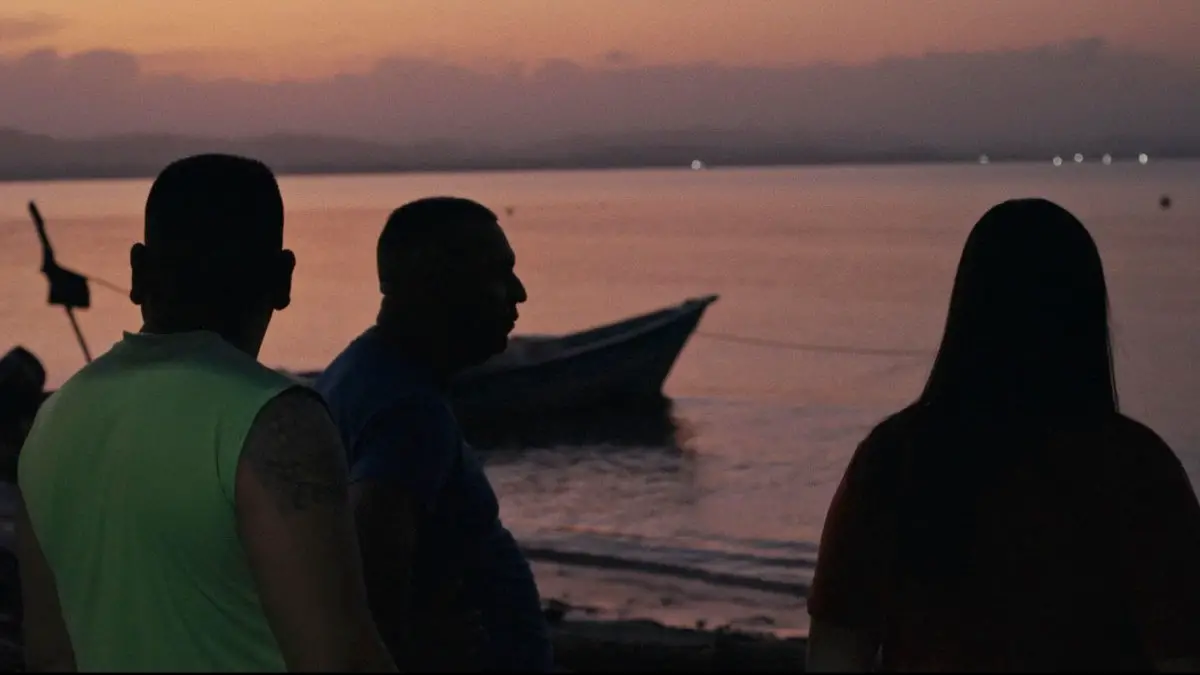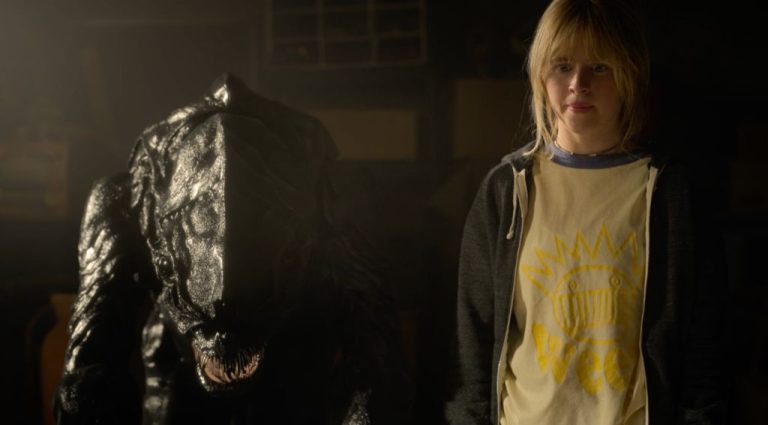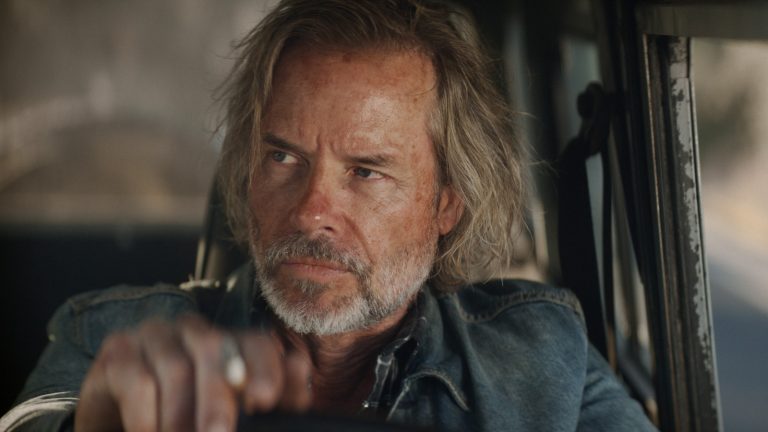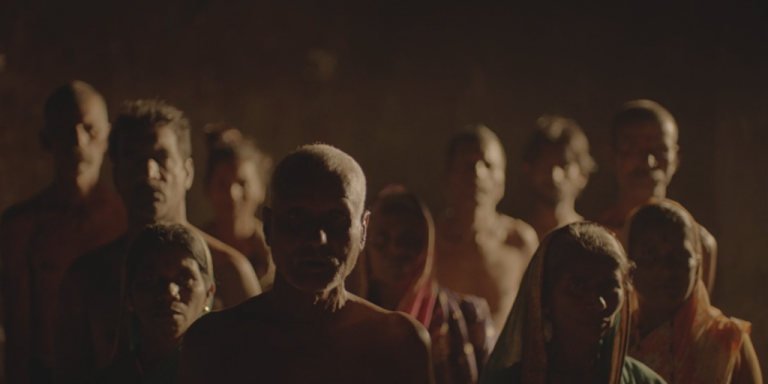Films about immigrants, both fictional and documentary, must always avoid oversentimentalizing in an already heated political environment. For its most part, completed before the advent of the current US administration, the new, expertly done doc “Roads of Fire” by Nathaniel Lezra offers something different. It invites viewers to the everyday life of people waiting for their fate in the American continent, be it a US asylum court date appointment or the preparation for a dangerous trip to the Darién Gap, the Panama-Colombian border famous for both natural and human threats.
Notably, the film features a Republican figure in its first scenes (former US President Ronald Reagan in 1989 archival footage) welcoming immigrants to the United States, while contemporary news reports simultaneously complain about the lack of shelters in NYC. This discrepancy points to a land of confusion, and “Roads of Fire” makes it clear that confusion surrounds its main characters, even more so than actual abuse or natural dangers.
Maria Pascal from Ecuador is NYC-based, but still waits for her asylum date. She has to put up with some alarming incidents in her home country, and has to remember painful experiences of domestic abuse on the road to making her claim credible. Adama Bah is an advocate for immigrants’ rights, who has to coordinate even the most minor details in the hot soup meals the small non-profit, EV (East Village) LovesNYC, organization prepares.
Most characters in “Roads of Fire” resonate instantly, leaving no room for cognitive misunderstanding. They only want to exist and do better in life than what has been allowed to them so far. Even small-time smugglers like Jonathan (in the film Asesors / Advisors), an immigrant himself, are treated with compassion.
Jonathan, having none of the youthful disregard for danger, but channeling a state-of-the-art confidence, will arrange everything for their group (which involves bribing all the relevant officials). Still, they will ultimately be eclipsed by larger smuggling organizations operating in Latin America, which sometimes have their own conflicting interests, as the end of the film (no big spoilers about rival cartels here) will unveil.
Roads of Fire” reveals a complex and sometimes unprecedented condition, as seen in the costly bus transport that Texas Governor Greg Abbott undertook (from April 2022) to move immigrants away from Texas to ‘sanctuary cities‘ like New York City.
Yet, this operation resulted in people being asked to leave without their documents at hand. But it also lays bare a shared undercurrent running through its characters and institutions alike: the tension between pursuing a better life and the guilt of abandoning one’s family, the frustration of small volunteer groups striving to help while large, well-funded relief organizations remain inert, and the simultaneous rise of misinformation—such as fabricated claims that immigrants are displacing Americans from New York City shelters.

It also boldly ventures to places previously inaccessible to filmmakers, such as the Darién Gap trip — one of the most interesting and challenging parts of the film. This is an expedition carefully planned from the beginning, involving at least two camping sites and a very threatening jungle trek. As one participant says before entering the last phase of this videogame-like adventure trip, “the adrenaline starts flowing.”
The audience doesn’t really see the dreaded details. Yet, stories about corpses and animals (and thieves) dominate most of the narrative. At the same time, the film editing juxtaposes the current trip (whose future is still uncertain, almost up to the end of the film) with Maria’s past successful trip to NYC -and her narration of the harrowing threats to her life.
That doesn’t make “Roads of Fire” an adrenaline-bred thriller. The film maintains its balance in telling the personal experiences (even though not all participants’ experiences are equally powerfully represented, Maria’s story here being the best case in point) and commenting on the lack of proper humanitarian care.
It is saddening to see one of the EVLovesNYC volunteers going to their daytime job, knowing their work is just a pin on the ocean of state indifference. The film will also refute the far-right wing card of ‘refugees as a threat’. One of its characteristic angles (dismissing some of the fake news usually propagated) is that immigrants are aware of both the differences between US laws and their own, and that they want to abide by them. The problem is that the procedure for implementing these laws in their case is at least unclear.
Thoughtful and very straightforward in its portrayal of the immigrant (human) experience, “Roads of Fire” doesn’t focus on a highbrow investigation and condemnation of US politics (but detects some of its faults). It instead investigates the life paths its subjects take as an empathetic course, leading the audience into seemingly simple decisions with harrowing consequences.
The documentary also focuses on the small, sometimes-overlooked details (e.g., the need to be in a group to survive the harsh jungle conditions), and it doesn’t dehumanize its subjects by making them victims of an already existing state indifference/abuse. It only points out that being on the run could happen to anyone — so be prepared — and does so with great narrative devotion and overall skill.




![Nadie sabrá nunca (No One Will Ever Know) Netflix [2019] Review – Turning to a Fictional World](https://79468c92.delivery.rocketcdn.me/wp-content/uploads/2019/08/Nadie-sabrá-nunca-No-One-Will-Ever-Know-768x384.jpg)


![79 Parts [2020] Review – A familiar crime-comedy that even fails to imitate](https://79468c92.delivery.rocketcdn.me/wp-content/uploads/2020/09/79-Parts-Movie-Review-highonfilms-1-768x477.jpg)